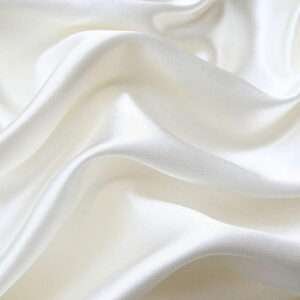Viscose Fabric: An In-Depth Exploration
Introduction
Viscose fabric, known for its silk-like feel and versatility, has carved a significant niche in the textile industry. This detailed guide explores every aspect of viscose fabric, including its history, production process, types, applications, environmental impact, ethical considerations, and care instructions. Whether you’re a fashion designer, a textile enthusiast, or someone interested in sustainable fabrics, this comprehensive description provides all the insights you need. For premium quality viscose fabrics, visit Saad Salman.
Table of Contents
- Overview
- History of Viscose Fabric
- Production Process
- Types of Viscose Fabric
- Characteristics of Viscose Fabric
- Applications
- Environmental Impact
- Ethical Considerations
- Care Instructions
- Where to Buy
- Conclusion
- References
Overview
Viscose, often referred to as rayon, is a semi-synthetic fiber made from cellulose. It is known for its breathability, softness, and versatility, making it a popular choice in various textile applications. Explore our extensive collection of viscose fabrics at Saad Salman.
History of Viscose Fabric
The history of viscose fabric dates back to the late 19th century when it was first developed as a cheaper alternative to silk. The term “viscose” comes from the viscous organic liquid used to make the fiber. For a detailed history, visit Wikipedia on Viscose.
Production Process
Raw Materials
Viscose is primarily made from wood pulp, often derived from fast-growing, regenerative trees such as bamboo, beech, pine, and eucalyptus. The cellulose extracted from these trees undergoes a series of chemical processes to produce viscose fiber.
Manufacturing Steps
- Preparation of Cellulose: Wood pulp is treated with caustic soda to create alkali cellulose.
- Aging: The alkali cellulose is allowed to age to reduce its molecular weight.
- Xanthation: The aged cellulose reacts with carbon disulfide, forming cellulose xanthate.
- Dissolution: The cellulose xanthate is dissolved in a caustic solution to form a viscous solution called viscose.
- Spinning: The viscose solution is extruded through a spinneret into an acid bath, where it solidifies into fibers.
- Drawing: The fibers are stretched to align the cellulose molecules, enhancing strength and elasticity.
- Cutting: The continuous filaments are cut into desired lengths for textile use.
For a detailed explanation of the production process, visit Wikipedia on Rayon.
Types of Viscose Fabric
Regular Viscose
Regular viscose is the most common type, known for its silk-like texture and affordability. It is widely used in clothing and upholstery.
High Wet Modulus (HWM) Viscose
HWM viscose, also known as modal, is a stronger and more durable form of viscose. It retains its shape and strength even when wet, making it ideal for activewear and towels.
Viscose Rayon
Viscose rayon is a specific type of viscose used in fashion textiles for its drapability and smooth texture. It mimics the feel of natural silk and is often used in luxury garments.
Microfiber Viscose
Microfiber viscose is a finer version of viscose, used in high-performance textiles and cleaning cloths. It offers superior softness and absorbency.
Characteristics of Viscose Fabric
Viscose fabric is prized for its numerous beneficial characteristics:
- Softness: Viscose has a smooth, silky texture that is gentle on the skin.
- Breathability: It is highly breathable, making it comfortable to wear in warm climates.
- Drapability: Viscose fabric drapes beautifully, adding elegance to garments and home textiles.
- Versatility: It can be blended with other fibers to enhance its properties.
- Absorbency: Viscose is highly absorbent, making it ideal for towels and activewear.
Applications
Fashion Industry
Viscose fabric is a staple in the fashion industry due to its versatility and affordability. It is used to make a wide range of clothing items, including dresses, blouses, suits, and scarves. Viscose’s ability to blend well with other fibers makes it a favorite for designers aiming for unique textures and finishes.
Home Textiles
In home textiles, viscose is used in curtains, upholstery, bed linens, and tablecloths. Its elegant drape and soft touch enhance the aesthetic appeal and comfort of home decor items.
Industrial Uses
Viscose is also used in various industrial applications, such as tire cords, surgical products, and non-woven fabrics. Its strength and flexibility make it suitable for demanding uses.
Arts and Crafts
Artists and crafters appreciate viscose for its ease of use and ability to take on dyes vividly. It is used in a variety of projects, from fabric painting to handmade crafts.
Environmental Impact
The environmental impact of viscose production varies. While it is derived from natural cellulose, the chemical processes involved can be harmful if not managed responsibly. Sustainable practices and advancements in technology are helping to reduce the environmental footprint of viscose production. For an in-depth look at the environmental impact, visit Wikipedia on Viscose Environmental Impact.
Ethical Considerations
Ethical considerations in viscose production include sustainable sourcing of raw materials and fair labor practices. Many manufacturers are adopting eco-friendly methods and ethical standards to meet the growing demand for responsible textiles. Explore ethical viscose options at Saad Salman.
Care Instructions
Proper care of viscose fabric extends its lifespan and maintains its appearance. General care tips include:
- Washing: Hand wash or use a gentle machine cycle with cold water.
- Drying: Lay flat to dry or tumble dry on low heat to prevent shrinkage.
- Ironing: Use a low heat setting and iron while the fabric is slightly damp.
Where to Buy
For high-quality viscose fabrics, visit Saad Salman. Their extensive collection includes a variety of viscose types suitable for all applications.
Conclusion
Viscose fabric is a versatile and valuable material with a rich history and wide range of applications. Understanding its properties, production process, and care can help you make informed choices for your textile needs. Whether you seek sustainable options or luxurious textiles, viscose fabric offers a blend of elegance, comfort, and practicality.
References
For more detailed information, explore these references:




Reviews
There are no reviews yet.